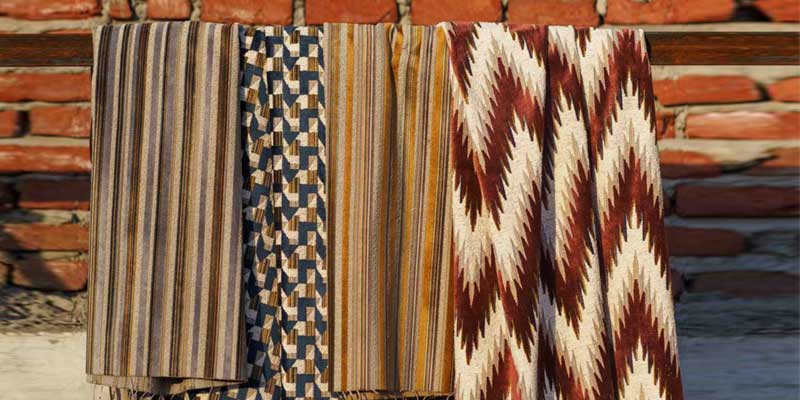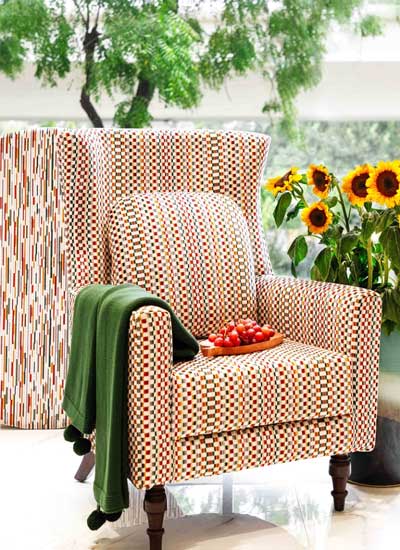
Discover how sustainable luxury is shaping in 2024
Interior textile businesses are increasingly focusing on ethically sourced materials and production processes, says Sachin Chauhan.
In the dynamic realm of interior design, the interplay between luxury and sustainability has become increasingly pivotal, reshaping the landscape of interior textiles.
Unveiling the evolution of sustainable luxury in interior textiles: A 2024 perspective
As we step into 2024, the fusion of opulence and environmental consciousness is taking centre stage. Here we explore the evolving facets of sustainable luxury, shedding light on the trends shaping the textile industry this year.
A symphony of eco-friendly fabrics
The cornerstone of sustainable luxury in interior textiles lies in the materials used. In 2024, the interior design community is placing a premium on eco-conscious choices. Organic cotton, hemp, recycled fibres and upcycled materials are gaining prominence, offering a harmonious blend of opulence and environmental responsibility. As consumers become more discerning, businesses are adapting to provide luxurious textures and finishes without compromising on ecological integrity.
Circular design: Closing the loop on textile lifecycle

The concept of circular design is gaining prominence in the interior textile industry. In 2024, sustainable luxury is not just about the initial production of fabrics but extends to the entire lifecycle of the product. Interior textile businesses are adopting circular design principles by incorporating recycling, upcycling, biodegradability, and also an emphasis on product life extension. This approach not only minimises waste but also establishes a sustainable loop that aligns with the eco-conscious mindset of both designers and consumers. It also aligns with environmental goals but also resonates with the evolving ethos of luxury that values enduring beauty. It’s no wonder that circular design is gaining momentum as a paradigm shift towards a more regenerative approach to luxury.
Artisanal craftsmanship: Celebrating heritage and sustainability
In the world of furnishings, it’s not just about the materials used, but also how they are constructed or crafted, that truly makes a major difference. A shift towards artisanal craftsmanship is evident in the sustainable luxury narrative. The sheer quantum of labour that goes into making artisanal luxury products makes them incomparable to the mass produced ones. Designers and consumers alike are valuing the uniqueness and character infused by skilled artisans. Hand-woven textiles traditionally crafted with precision are becoming emblematic of luxury in the interior design sphere. This not only supports local economies but also fosters a deeper connection between the consumer and the product, elevating the perceived value of sustainable luxury.
Wellness through regenerative materials
Luxury is synonymous with superior comfort and wellness. So materials that ensure these features – silk, cotton, linen, and some new and experiential fabrics such as hemp, bamboo, banana – are gaining continuous patronage. Silk is luxurious and warm, linen offers breathability and coolness; and bamboo is eco-friendly and hypoallergenic. Milk and aloe-vera infused textiles come with the promise of unique health benefits. Milk fabric is exceptionally soft, and aloe-vera infused textiles promote skin health. And, at a time, when wellness is intricately woven into luxury home décor, these materials are being sought after.
Technological integration: Smart luxury for smart spaces
The intersection of sustainability and technology is reshaping the landscape of interior textiles. Innovation is a constant driver of change, and 2024 sees sustainable luxury fervently embracing technological advancements. Luxury is not just about aesthetics but also about functionality. Interior textile businesses are integrating smart technologies into their products, offering features such as energy efficiency, climate regulation, and even embedded sensors for real-time environmental monitoring.
From the use of advanced 3D visualisation for bespoke textile creations to the integration of smart textiles, technology is redefining the luxury experience. This marriage of sustainability and innovation is appealing to a tech-savvy consumer base while pushing the boundaries of what is achievable in the realm of interior textiles. This infusion of technology enhances the overall value of sustainable luxury in interior design.
Transparency and certification: Empowering informed choices
Transparency is a cornerstone of sustainable luxury in 2024. Interior textile businesses are recognising the importance of providing consumers and designers with clear information about the sourcing, production, and environmental impact of their products. Certifications from recognised bodies ensure that the materials used in interior textiles meet stringent sustainability standards. This transparency empowers the interior design community to make informed choices that align with their commitment to sustainability.
Customisation: Tailoring luxury to individual tastes
Personalisation has always been a hallmark of luxury. In 2024, sustainable luxury is not confined to a one-size-fits-all approach. Conscious consumers are seeking bespoke solutions that align with their values. Interior textile businesses are responding by offering customisation options, allowing clients to curate their spaces with textiles that reflect both personal style and a commitment to sustainable living. This allows designers to create unique and luxurious spaces tailored to individual preferences, thus paving the way for a shift towards personalised luxury that not only enhances the exclusivity of interior textiles but also minimises wastage by producing items that resonate with the specific needs and tastes of clients. This marriage of luxury and individuality creates a more meaningful and enduring connection between the consumer and the product.
Collaborative initiatives for a sustainable future
The transformation towards sustainable luxury in interior textiles is a collective effort. In 2024, businesses, designers, and consumers are coming together to form collaborative initiatives that promote sustainable practices. From industry-wide sustainability certifications to partnerships between interior designers and textile manufacturers, these initiatives are fostering a sense of community and shared responsibility for shaping a more sustainable future.
Transparency and ethical sourcing
As consumer awareness grows, transparency becomes a cornerstone of sustainable luxury. Interior textile businesses are increasingly focusing on ethically sourced materials and production processes. Communicating the journey of a product, from its origin to the hands of the consumer, builds trust and enhances the perceived value of sustainable luxury. The narrative is no longer just about the final product; it’s about the ethical choices made throughout the supply chain.
In conclusion, as we navigate the intricate tapestry of interior design in 2024, the evolution of sustainable luxury in interior textiles stands as a testament to the industry’s commitment to both aesthetics and environmental stewardship. By embracing innovative materials, circular design principles, artisanal craftsmanship, technological integration, transparency, customisation, and collaborative initiatives, the interior design community is crafting a future where opulence and sustainability coexist seamlessly.
This transformative journey signifies not just a trend, but a paradigm shift towards a more conscious and responsible approach to luxury in interior design.
As an interior textile retail business owner in India, embracing these trends not only aligns with global shifts, but also positions your brand at the forefront of a conscientious and discerning market. By staying attuned to these developments, you can shape a narrative that not only resonates with the interior design community but also contributes to a more sustainable and luxurious future.
About the author:

Carrying forward a formidable legacy, Sachin Chauhan, Director, Nirmals Furnishings, keeps bringing new ideas and insights that ensure the renowned brand is at the vanguard of creativity and innovation at all times. Having joined the family business 20 years ago, he has taken keen and holistic interest in every aspect of the brand building. Even though the soft furnishings industry is known as a goods industry, he believed that it should be more service-driven from the start. And that changed everything. He likes to interact with his clients and understand their needs and get his vendors to undertake developments based on that.



